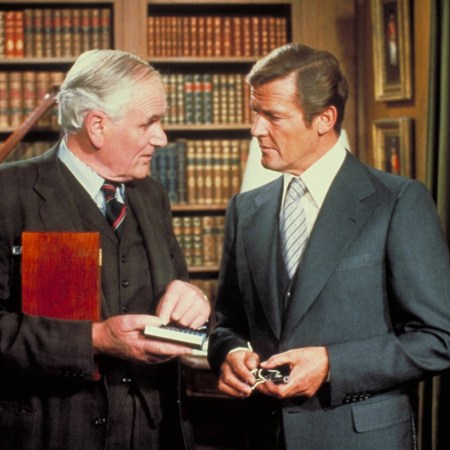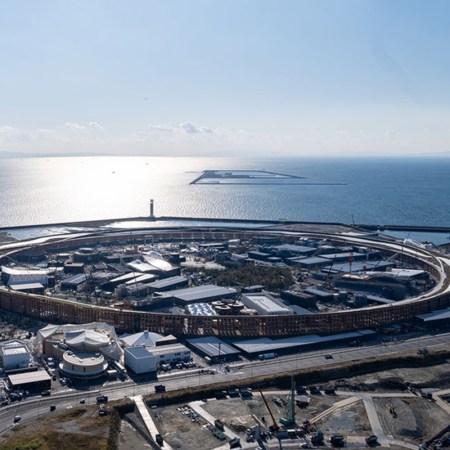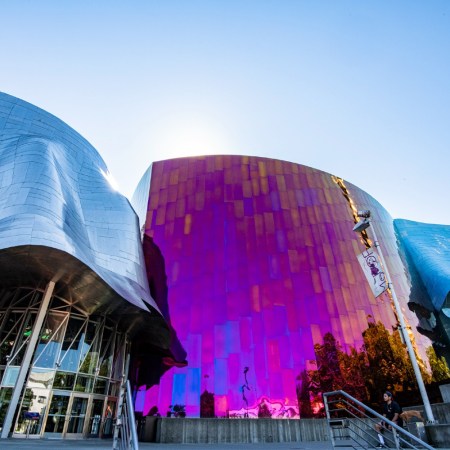There are iconic Chicago photos everyone has seen.
Just ask the closest tourist. They’ll show you.
Then there are iconic Chicago photos nobody has seen.
And for those, you need Chicago: Classic Photographs, the gorgeous new tome celebrating some of the most seminal Chicago street snaps of all time, many of them long-lost until now.
The stunning collection comes courtesy of editors Richard Cahan and Michael Williams, who under their publishing imprint CityFiles Press, have become the city’s most foremost photo historians (see: here, here and here).
Ahead of the book’s release next month, we linked up with the two editors to get the low-down on the stories behind five of their favorite photos from their collection.
Unknown photographer, 1905
“We decided to open the book with this picture of State and Madison taken in 1905. It was important to us that we chose pictures of the city that were somehow grounded to the city we know today. We felt that if we chose pictures pre-Chicago Fire, or of the city that looks totally different than it does today, it wouldn’t qualify as ‘classic.’ And this view, even though filled with cable cars and horse and buggies, still hasn’t changed that much. Louis Sullivan’s Carson’s store is still there, and the energy and street life of State Street remains unchanged.”—Michael Williams
John Vachon, 1940
“This picture is filled with information. Look at the hats, the dresses and the items these Chicagoans carry. It’s like a sociological study. Everybody at the stop is standing still, but the picture is filled with action —anticipated action as our eye heads down the street in the direction of the streetcar that must be approaching from just beyond the frame. The photo was taken by John Vachon, a documentarian who worked for the government’s Farm Security Administration photo project. He came to Chicago twice — in 1940 and 1941. We used old phone directories and CTA experts to determine the exact location of the photo.” —Richard Cahan
Gordon Costner, c. 1932
“Another view of the city that is eerily close to the city we know today. Of course, modern buildings now dwarf the Palmolive Building, and its powerful Lindbergh Beacon was put out long ago. The photographer, Gordon Costner, took many beautiful and artistic views of the city beginning in 1930s. He ran a commercial studio and also taught at Chicago’s Institute of Design, the influential school that taught many of the city’s best photographers. Costner loved photographing the city at night and our book features a number of his best, including night shots of Grant Park, Marshall Field’s and Buckingham Fountain.”—MW
Detroit Publishing Company, 1911
“I chose this picture because I have been using this train station for the last 50 years (since I was 1), and before that my father did for decades himself. And remarkably, very little of this view has changed over the years. In fact, you could probably go out there today and record something very close to this exact view. Now called the Ogilvie Transportation Center, it was called the Chicago and North Western Railway Depot when built. The grand main waiting room was torn down in 1984, but much of the shed is still there. This picture was taken in 1911 by the Detroit Publishing Company, headed by famed photographer William Henry Jackson.” —MW
Russell Lee, 1941
“One of the most perfect pictures I’ve ever seen: boys perched on the front bumper of a car on Easter Sunday in absolute precision. You see grace and pride and wonderment in their faces. For years, we wondered about the identity of the boys. The photo was taken by Russell Lee, a white photographer with the government’s Farm Security Administration who came to Chicago in 1941 to document Chicago’s South Side. One of Lee’s subjects — the tall young man in the middle—was identified in 2008. He served in the Army, returned to Chicago and led a long, full life. The others remain a mystery, which only adds to the picture’s mystique.”—RC
This article was featured in the InsideHook Chicago newsletter. Sign up now for more from the Windy City.
























